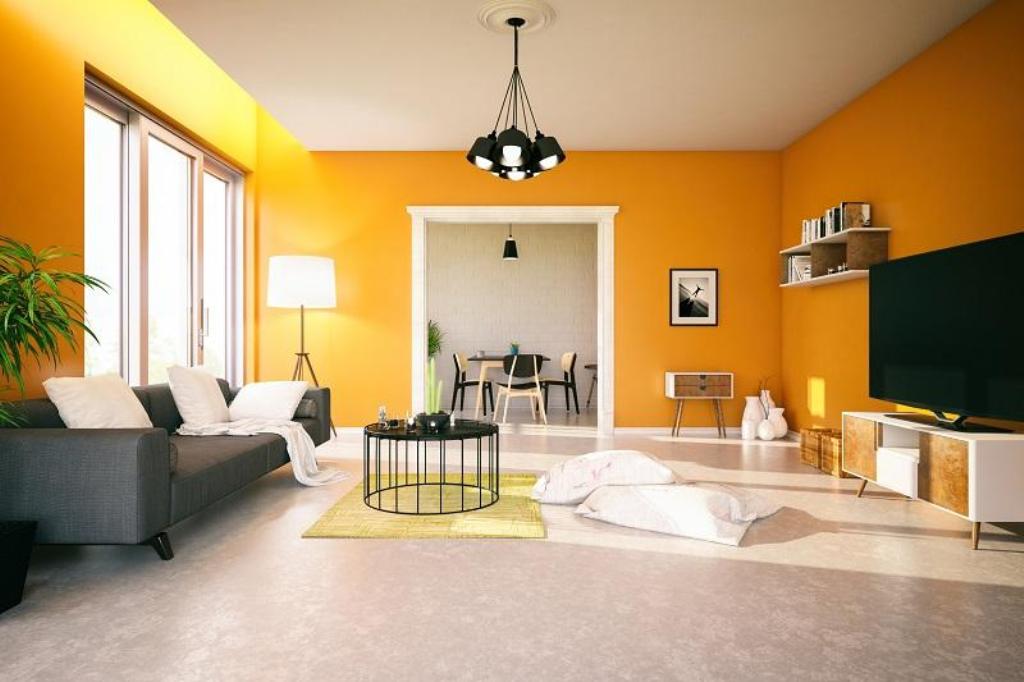Nothing beats that feeling of satisfaction when you finish a big task, and painting your house interior is definitely one of those. So now that you sit down, and relax as you watch the paint dry and set in, you wonder if there is some way to preserve the paint’s freshness and save yourself some time before you have to go through the whole process again. To make things easier for you, we have compiled a list of helpful advice that will help your paint job stay nice for as long as possible.
Good work lasts longer
While it does seem redundant at first, the importance of doing the actual painting right can’t be emphasized enough. This usually means investing a bit more in the beginning, but the fact is that it pays off in the long run. First of all, you’ll want to use high-quality paints and painting products.
If you don’t have your own painting equipment and you’re not planning to invest in any, then contracting a professional painter who does high-end work is a must. If you are doing it on your own then be sure to prep the walls in the right way. When you begin the actual painting, pay attention to detail and don’t rush – rushing is a sure way to mistakes in this line of work. Once you are done with this huge task and the paint dries, you can go to the harder part: taking care of the paint.
Maintenance is not too hard, but it does require you to do a little bit of work and checking on the areas that are prone to spotting every now and then.
Let the walls breathe
This is highly important while the paint is drying, but people do tend to forget that your painted walls have to breathe all the time. One of the top ways to degrade your painted walls inside the house is to slowly erode them with stale air, and even more with cigarette smoke. If you are smoking inside the house, getting air purifiers for smoke is the best way to preserve the paint and make it last much longer. It’s not just the walls that will benefit, but your furniture, curtains and (most importantly) your lungs. Natural ventilation is still required, but these devices can do wonders with both tobacco smoke and other pollutants that exist in our homes.
Clear up blemishes
It is close to impossible to perfectly protect your painted walls from spots and blemishes, but with immediate damage control, you can save them from destroying your work in the long run. In practice, this means cleaning up right away with damp sponge and, if needed, water with a little bit of dishwashing liquid. Avoid using harsh chemical products like bleach if you don’t have to – but if you do, be sure to keep some paint for cover-up work. If you don’t have any extra paint and you are not sure which one you need, you can always computer match it at a paint store. All you need to do is bring a chip from the wall. Just make sure to slice it off from an area that’s not too in the way.
Wash your walls
Unfortunately, this doesn’t seem to be a very well-known practice, even though it is highly beneficial for your walls and paint. While you don’t need to wash your living room walls as often, it is recommended that you do it at least once a year. When it comes to walls that have a higher “traffic” like the ones in kitchens, bathrooms, hallways and such, you can do it as often as you feel you need.
Like with spots, you can clean your walls by making a mixture of warm water and dishwashing liquid. For better results you can add a cup of ammonia in one gallon of water with one teaspoon of dishwashing detergent. Keeping your walls clean, especially in combination with quality washable paint, is definitely going to prolong the time before your next massive paint job. Additionally, do not disregard the importance of regular dusting. Dirt does tend to accumulate on the walls if they are not cared for, and this can slowly but surely reduce the life of your hard work. If you are unlucky and end up with mold spreading on the walls due to humidity, clean it with bleach diluted in water (1:4 ratio), but consult a professional if it spreads too much.
As you can see, taking care of your painted walls is not such a big deal, even if it looks like a lot at first. With a little bit of diligence and regular checking up on problematic areas, you can easily make sure that your walls endure for years before having to paint them again.




















